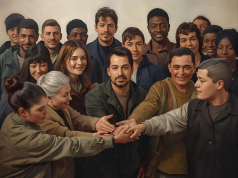As veterans transition from the structure and camaraderie of military life to the civilian workforce, they often encounter an unspoken chasm—a divide that separates their rich history of service from the corporate world they aim to enter. This transition presents unique challenges, not least among them the necessity of translating military roles into corporate language and the daunting task of building a professional network from the ground up.
The first obstacle many veterans face is distilling their military experience into a format that resonates with corporate hiring managers. Veterans possess a wealth of skills—leadership, crisis management, strategic planning—but these don’t always translate transparently to a civilian resume. Our veterans need to become fluent translators of their own experience, crafting narratives that highlight how their military skills will benefit the corporate sector.
To accomplish this, veterans must first decode the ‘civilian language’ of their chosen industry. Each sector has its own jargon, culture, and expectations. To bridge this gap, veterans should initiate informational interviews with industry professionals, partake in sector-specific training, and utilize platforms like LinkedIn to understand industry trends and language.
Building a professional network often comes next, and this can be an intimidating step for many veterans. The familiar network of service members is no longer a daily reality, and the informal ‘buddy system’ that often exists in the military doesn’t have a direct analogue in civilian life. To forge new connections, veterans must be both strategic and authentic. Engaging with professional veterans networks can offer a touchstone of familiarity within the new corporate landscape. Organizations such as the American Corporate Partners offer mentorship opportunities that can open doors and provide guidance.
Mentorship is indeed a powerful tool for veterans. A mentor who has successfully navigated the transition can provide invaluable insights, introductions, and advice. These relationships can help veterans not just to decode the industry language but to become fluent contributors to these new conversations.
Moreover, veterans should approach networking with the understanding that their service is a unique strength, not something to downplay. Sharing stories of service can create powerful, emotional connections that resonate with people and may lead to more genuine and lasting professional relationships. When veterans present themselves as the leaders they are, the corporate world often takes notice.
In tailoring these strategies to appeal to readers of The Washington Post, The New Yorker, and The New York Times, it helps to understand that these readerships value in-depth analysis, sophistication, and narratives that reveal human resilience and adaptability. Articles should therefore provide veterans with actionable advice couched in narratives that encapsulate the veteran experience, the challenges overcome, and the triumphs of successfully bridging the military-civilian divide.
Ultimately, the journey from military to civilian life is deeply personal but also universally resonant. By providing veterans with the tools they need to translate their experience, build their networks, and find mentors, we empower them to navigate this transition successfully and to thrive in the corporate world. This is a story about more than just finding a job; it’s a story about finding a new mission in the civilian realm, and the readers of prestigious publications will undoubtedly be engaged by the depth and authenticity of these journeys.



























